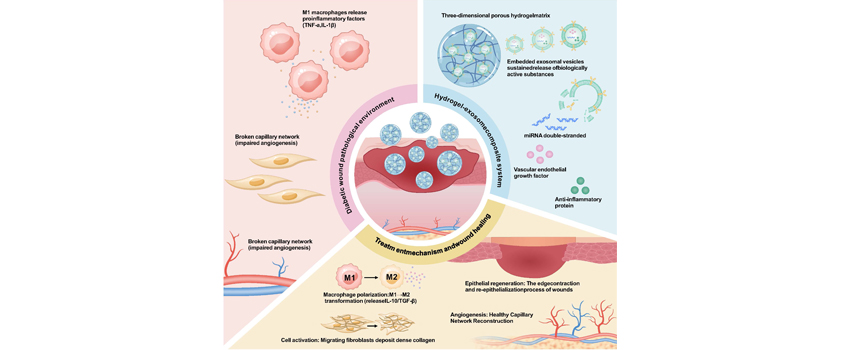2025 Volume No 53 – pages 82-97
Title: Hydrogel-exosome systems in the treatment of refractory diabetic ulcers: mechanisms, progress, and prospects |
Authors: ZH Deng, ZL Yang, S Yi, ZQ Liu |
Address: Department of Medicine, Lausanne University Hospital (CHUV) and University of Lausanne, Lausanne, Switzerland; Trauma Center Department Three, Zhuzhou Hospital Affiliated to Xiangya School of Medicine, Central South University, Zhuzhou, Hunan, China |
E-mail: shun.yi at chuv.ch; zhiqin_liu at csu.edu.cn |
Abstract: Diabetic wounds pose significant clinical challenges due to their delayed healing, chronic inflammation, poor angiogenesis, and impaired cell migration. Exosomes, which are rich in proteins, RNAs, and other bioactive molecules, have properties that promote anti-inflammatory and tissue repair processes. On the other hand, hydrogels provide a moist environment that facilitates controlled drug release, thereby enhancing wound healing. This review explores the potential of hydrogel-exosome composites to overcome the challenges of treating diabetic wounds by regulating macrophage polarization, reducing inflammation, and promoting angiogenesis and fibroblast migration, thus accelerating wound repair. |
Keywords: Exosome, hydrogel, diabetic wound, healing. |
Publication date: 31st October 2025 |
Copyright policy: © 2025 The Author(s). Published by Forum Multimedia Publishing, LLC. This article is distributed in accordance with Creative Commons Attribution Licence (http://creativecommons.org/licenses/by/4.0/). |
Article download: Pages 82-97 (PDF file) |

